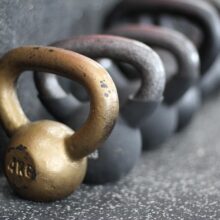How to Exercise to Lose Weight: A Comprehensive Guide
Introduction
Losing weight can be a challenging and frustrating process, but it’s a journey that’s well worth the effort. A healthy weight can significantly reduce the risk of chronic diseases, such as heart disease, diabetes, and certain types of cancer, while also boosting energy levels and overall well-being. One of the most effective ways to achieve weight loss is through exercise. Not only does regular physical activity burn calories and build muscle, but it also has a profound impact on our mental health and overall mood.
Before You Start: Setting Your Goals and Assessing Your Health
Before you begin your exercise routine, it’s essential to set clear and realistic goals. Consider the following:
* What is your target weight loss goal? Aim to lose 1-2 pounds per week for a sustainable weight loss.
* What type of exercise do you enjoy or want to try? From cardio to strength training to flexibility exercises, there are countless options to choose from.
* Do you have any health concerns or injuries that may impact your exercise routine? Consult with your doctor or a healthcare professional before starting a new exercise program.
Finding the Right Exercise for Your Body Type
When it comes to exercise for weight loss, it’s essential to find activities that work best for your body type. Consider the following:
* If you’re an endurance athlete, you may excel at cardio exercises like running, cycling, or swimming.
* If you’re a strength athlete, you may prefer resistance training exercises like weightlifting or bodyweight exercises.
* If you’re a beginner, you may want to start with low-impact activities like yoga or Pilates.
High-Intensity Interval Training (HIIT) for Weight Loss
HIIT is a popular and effective way to lose weight quickly and efficiently. This type of exercise involves short bursts of high-intensity exercise followed by brief periods of rest. HIIT can be applied to various exercises, such as:
* Sprints: Run or cycle at maximum intensity for 30 seconds, followed by 30 seconds of rest.
* Burpees: Perform a set of burpees in quick succession, resting for 30 seconds between sets.
* Jump squats: Perform a set of jump squats in quick succession, resting for 30 seconds between sets.
Strength Training for Weight Loss
In addition to cardio exercises, strength training is an essential component of a comprehensive weight loss plan. Building muscle through resistance training can:
* Boost metabolism: As you build muscle, your resting metabolic rate increases, helping your body burn more calories at rest.
* Increase bone density: Resistance training can help strengthen bones and reduce the risk of osteoporosis.
* Improve overall health: Strength training has been shown to reduce the risk of chronic diseases like heart disease and diabetes.
Cardio Exercises for Weight Loss
Cardio exercises are an excellent way to burn calories and improve cardiovascular health. Some effective cardio exercises for weight loss include:
* Running: Whether you’re a beginner or an experienced runner, running is an excellent way to burn calories and improve cardiovascular health.
* Cycling: Stationary cycling or outdoor cycling are both excellent ways to burn calories and improve cardiovascular health.
* Swimming: Swimming is a low-impact exercise that’s easy on the joints and can be modified to suit your fitness level.
Adding Diet to Your Weight Loss Routine
Exercise is just one part of the weight loss equation. A healthy diet is also essential for achieving and maintaining a healthy weight. Focus on:
* Eating nutrient-dense foods: Focus on whole foods like fruits, vegetables, whole grains, lean proteins, and healthy fats.
* Tracking your calorie intake: Keep track of your daily calorie intake to ensure you’re consuming enough calories to support your exercise routine.
* Staying hydrated: Adequate hydration is essential for exercise performance and overall health.
Conclusion
Exercising for weight loss requires patience, dedication, and a comprehensive approach. By finding the right exercises for your body type, incorporating HIIT and strength training into your routine, and making healthy dietary choices, you can achieve and maintain a healthy weight. Remember to set realistic goals, consult with a healthcare professional if necessary, and track your progress to stay motivated and on track.





